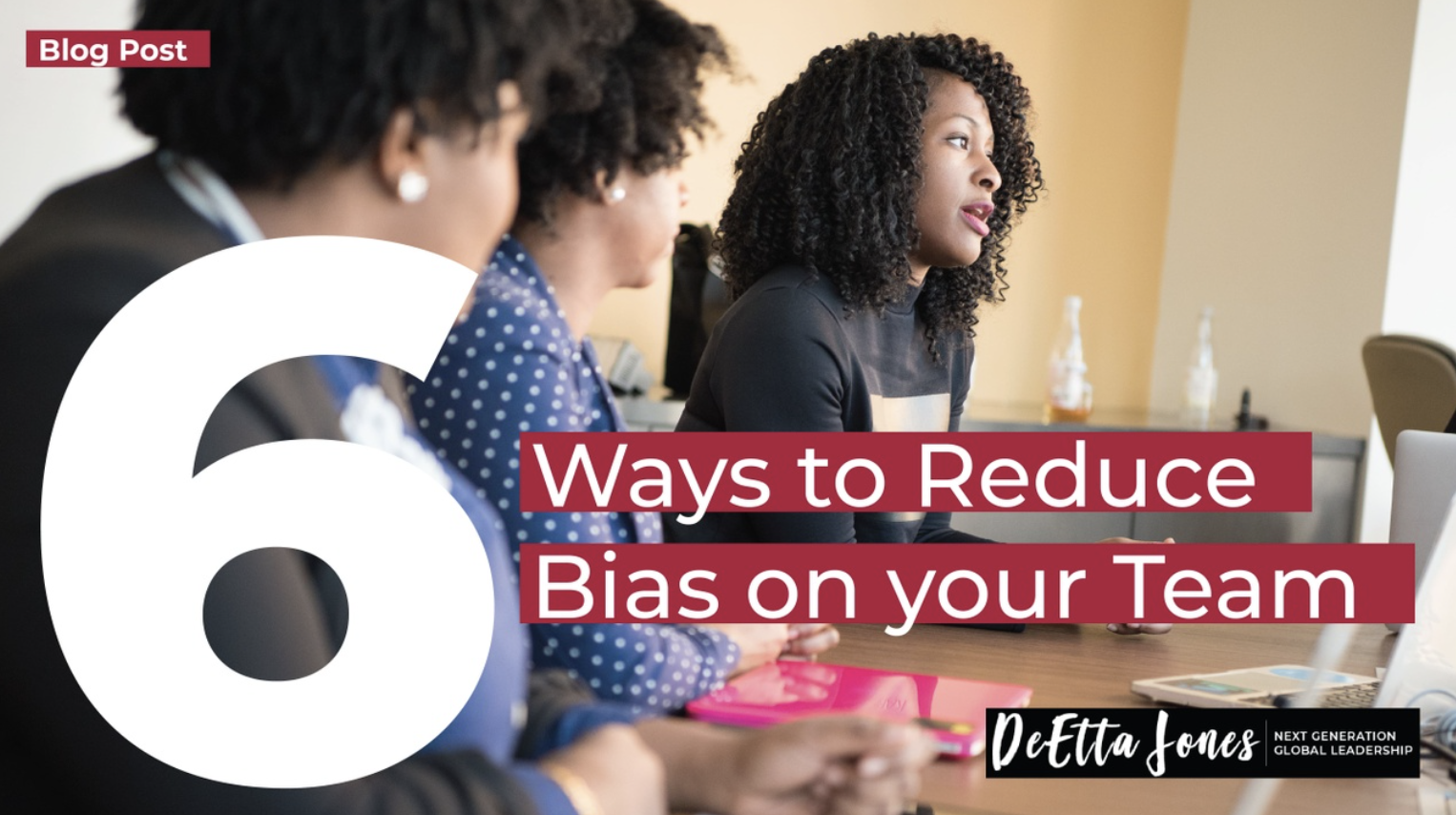By Paula R. Jenkins and DeEtta Jones
The trials of the past several years have allowed for learning and growth, yet they have also highlighted places where long-lived bias exists. Though bias is heavily discussed–seemingly everywhere and constantly–a lot of misconceptions continue to exist. A Psychology Today article defines bias as "a tendency, inclination, or prejudice toward or against something or someone." Bias results from our powerful brains’ ability to quickly scan incoming information, selecting what seems most relevant for us in a particular context, at a given time, and factoring in other previous experiences. Our brain then, just as quickly, filters out less relevant information or doesn’t align with our previously held notions about what is important, accurate, or safe. Consequently, bias isn’t always negative and doesn't always lead to disparity in the workplace or relationships.
As a parent, for example, it is altogether likely that you have a special fondness for your own child. I remember when my son was a toddler. I found everything he did particularly clever and adorable. I could observe other people’s children doing the same activities as him–dressing like a superhero to go to the grocery store, singing his ABCs without missing a beat, and learning to tie his shoes. When he did these things, though, I found it delightful, enough to boast about to anyone who would listen. I have a tremendous bias for my son. My brain actually “catches him” doing things that underscore the beliefs I hold about his wittiness, charm, and overall good nature.
Bias works the same for experiences and people that we do not like; our brains look for–consciously and unconsciously (or implicitly)– information that reinforces negative perceptions we hold. It is important to understand that bias occurs in the workplace and as leaders and your role in how to reduce it. Why? Because the impact of negative biases that are not addressed can create a toxic work environment. Deloitte’s 2019 State of Inclusion survey, including results from 3,000 participants, included some eye-opening information.
- “86% of respondents said that they could be themselves at work the majority of the time. Yet…
- 39% said they experience bias frequently - at least once a month
- 83% categorize the bias(es) they have experienced and/or witnessed in the workplace as subtle and indirect or microaggressions
- 68% said that witnessing or experiencing bias had a negative impact on their productivity”
Keep in mind, the data represented in this survey represent pre-pandemic criteria. Massive shifts in how people worked, how communication channels were created and nurtured, and shifting assignments have made experiences of negative bias even more pronounced for many.
As a leader, part of your role should be to ensure your team feels that they are in an environment free from barriers to their success. Stay aware of areas where negative bias that might be causing harm, and continuously work to reduce negative bias in yourself, your team, and in organizational systems.
6 ways to reduce bias on your team:
- Set expectations – Clearly communicate your expectations. Setting expectations will keep your team on the same page with you. This ensures that everyone understands what is expected of them in their role. As individual and collective awareness of bias and its implications become more understood, expectations can shift.
- Communicate clearly – Make sure you are asking and answering questions consistently. Regular and open communication with team members will help you understand how they are feeling and allows you to identify issues quickly. If you are unsure, ask questions. We can tend to assume - and then hold those assumptions against the person - when our own unconscious bias could come into play. It’s amazing what a simple question can do: What is going on? What is going well? or What could be better? Creating an invitation to share what’s on their mind can make an employee feel included and heard. As pointed out in this Society of Human Resource Managers article, it also creates opportunities for making connections between team members’ roles and organizational systems, a core competency for leaders.
- Listen - Listening is one of the most cited actions of leaders who are viewed as nurturing a supportive team environment. Listening comes in many forms–formal one-on-one meetings, in group settings, and casual exchanges. Most important for reducing the negative impact of bias is to listen even to the things that are not easy to hear, spoken the loudest or most often, or that you glean through more subtle interactions.
- Self-awareness – As a leader, you are not perfect, and you can’t expect your team to be perfect, either. Self-awareness means that you are paying attention to your thought process, as well as to your words, actions, and choices. This provides assurance that you are not making assumptions about your team. Building self-awareness also extends to getting involved in groups and experiences beyond those most familiar to you. Sometimes we learn the most about our biases when we put ourselves in the position of confronting “otherness”. It is in these moments that we surface the often humbling gap between what we espouse and how we actually feel and act. Learn how to put yourself in another’s shoes, and use it as a point of ongoing reflection and practice.
- Create an inclusive space – This is one of the areas that is so important when it comes to reducing bias. Create an inclusive space where your team members feel heard and celebrated – all year long. Inclusive workspaces are virtual and/or physical environments where the norm has been established that encourage and actively promotes all voices being present.
- Transparency – Be open. Transparency is a worthy and realistic leadership characteristic. Transparency is about how one communicates. It includes describing the process associated with decision-making, who makes the decision, what criteria are being used, and the measures taken to ensure that negative bias is mitigated. Often just the act of including “identifying and mitigating negative bias” brings such awareness to each person involved in a process that the outcome is automatically more inclusive.
We all have biases, thanks to our brains' brilliant wiring. The goal for leaders is to surface our personal and systems-based biases, interrogate them, and make intentional choices that allow our inclusive values to be centered. Mitigating bias is not a one-and-done task; it takes the commitment of lifelong learning and can make a world of difference.

Paula R. Jenkins is a consultant who focuses on personal and organizational effectiveness.

DeEtta Jones is the founder and CEO of DeEtta Jones and Associates.

